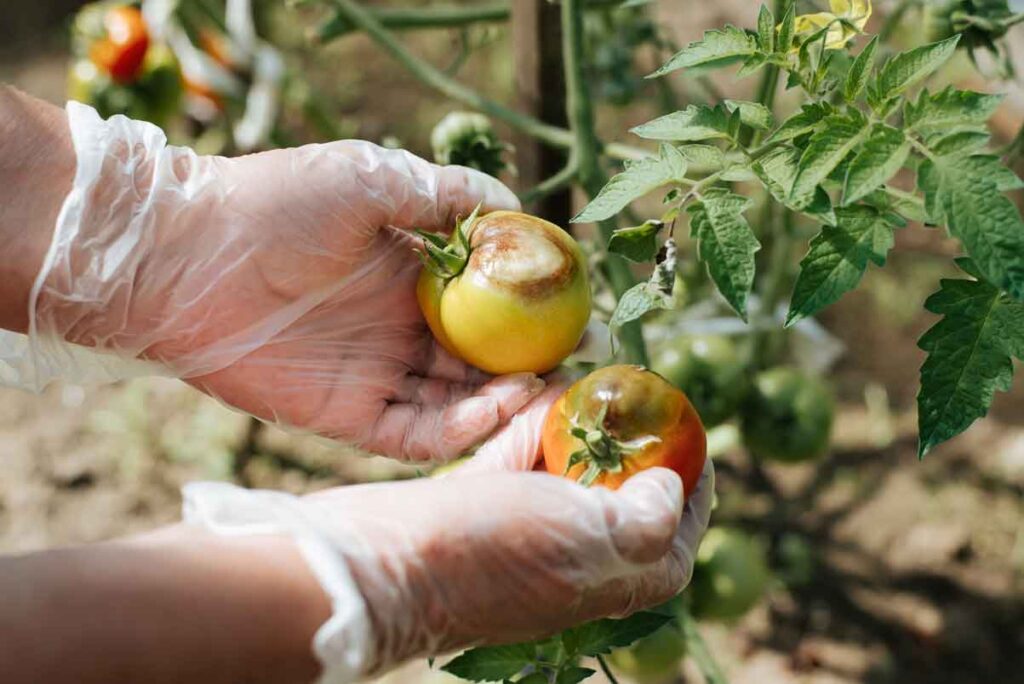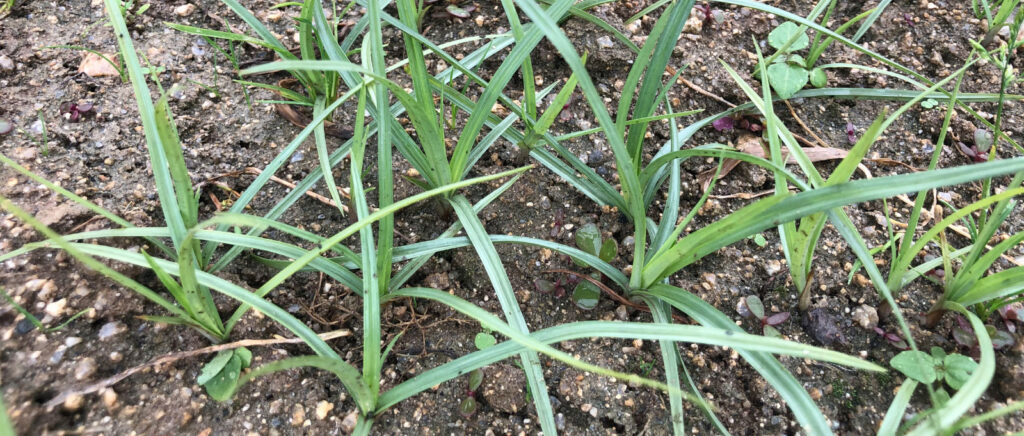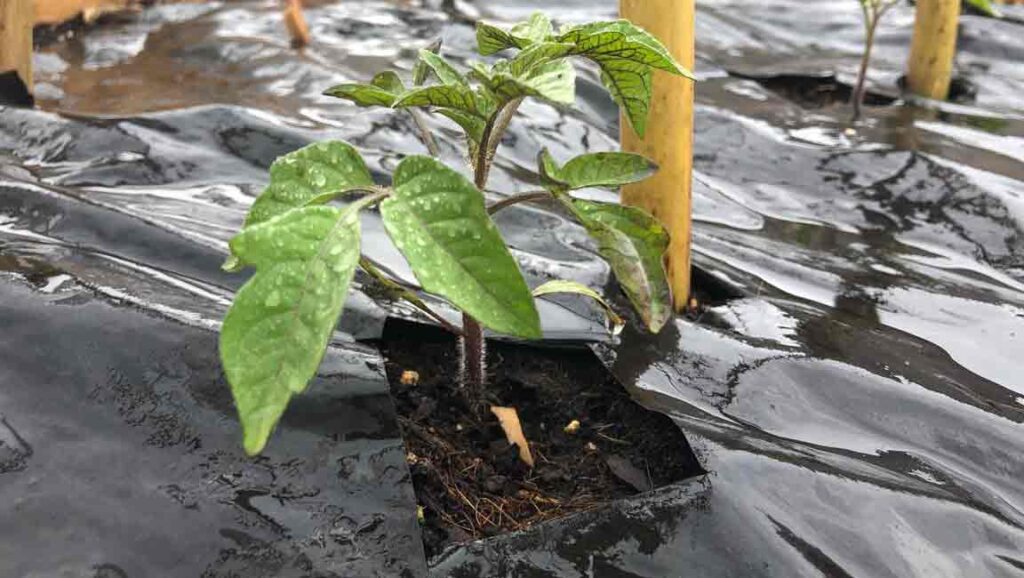Tomato plant diseases represent one of the greatest challenges for farmers and horticulturists. Today, tomato cultivation is highly valued worldwide, even though it is particularly vulnerable to various pathogens due to its delicate physiology, fluctuations in ambient humidity, and high nutrient requirements. All these characteristics make tomato plants an easy target for fungi, bacteria, viruses, and physiological disorders.
Once again, welcome to our Novamulch agricultural space. On this occasion, we will work together to learn how to detect tomato diseases, identify their symptoms, and implement sustainable prevention and control measures to protect the health of our crops, as well as ensure more abundant and higher-quality harvests.
We’ve divided this information into two parts so we can go into detail about each topic and get the most out of it. Let’s start with the first part.
Preventive measures against tomato plant diseases.
Let’s first study the general measures we should follow in all cases of tomato plant diseases. Let’s see.
General preventive measures against tomato plant diseases:
Select mildew-resistant hybrids and varieties. This wise decision will reduce the risk of outbreaks and spread. In Spain, for example, there are varieties resistant to late blight and Fusarium wilt.
Continuously remove plant debris or any leftovers from previous crops, such as leaf scraps, stems, or diseased fruit. These should be removed as they serve as a storage site for spores for future seasons.
Preconditioning soil drainage and assessing water availability to implement smart drip or localized irrigation. Here, biodegradable paper mulch once again plays an essential role in maintaining the entire crop structure in optimal condition.
Evaluate and properly structure the ventilation channels available, and first organize a viable planting system, that is, plant with sufficient separation to allow air and water to circulate in balance.
Avoid sprinkler irrigation that wets the foliage and preferably direct watering toward the root system. This is why we should water during the day rather than at dusk, as this will take advantage of temperatures that allow the foliage to dry quickly.
It’s very important to rotate our crops periodically. At the end of each agricultural project, we’ll remove any remaining crops. In the case of tomato plant diseases, we must continually remove these infected leaf or stem debris. And don’t forget to rotate crops with different ones from the previous ones.
Monitor your crop frequently, at least once a week, to detect early signs. When we observe the possibility of high humidity and moderate temperatures, we are looking at the ideal habitat for the proliferation of tomato plant diseases.
Therefore, in our logbook or agricultural journal, let’s monitor temperature and humidity fluctuations so we can cut off diseased, defective leaves, and abnormal shoots in time, thus preventing the spread of tomato plant diseases.
Using biodegradable paper mulch to control diseases in tomato plants.
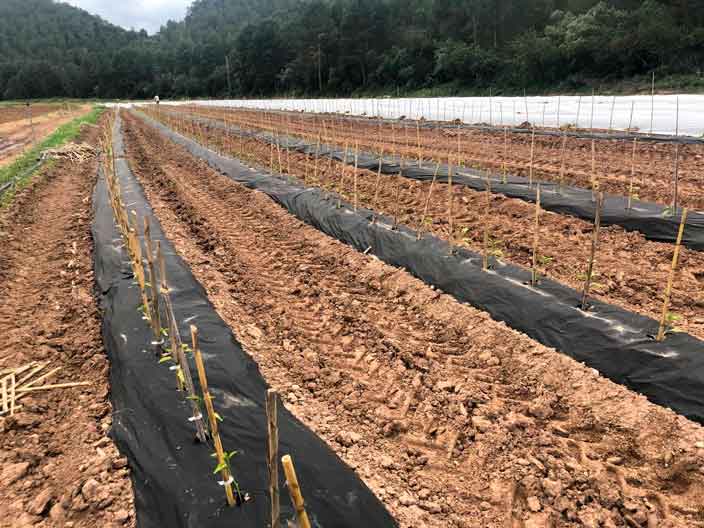
Using Novamulch biodegradable paper mulch reduces the harmful effects of splashing and direct contact of foliage with moist soil. This way, we maintain a protected microclimate and effective control throughout the entire crop cycle, while avoiding unwanted cost increases and inconveniences for our initial budgets.
Let’s keep in mind that by implementing Novamulch biodegradable paper mulch in our crops, we will avoid all these problems. This material not only inhibits the proliferation of weeds like sedge, but also balances water and heat conditions throughout all planting stages, as well as significantly reducing the occurrence of tomato plant diseases caused by excessive soil moisture.
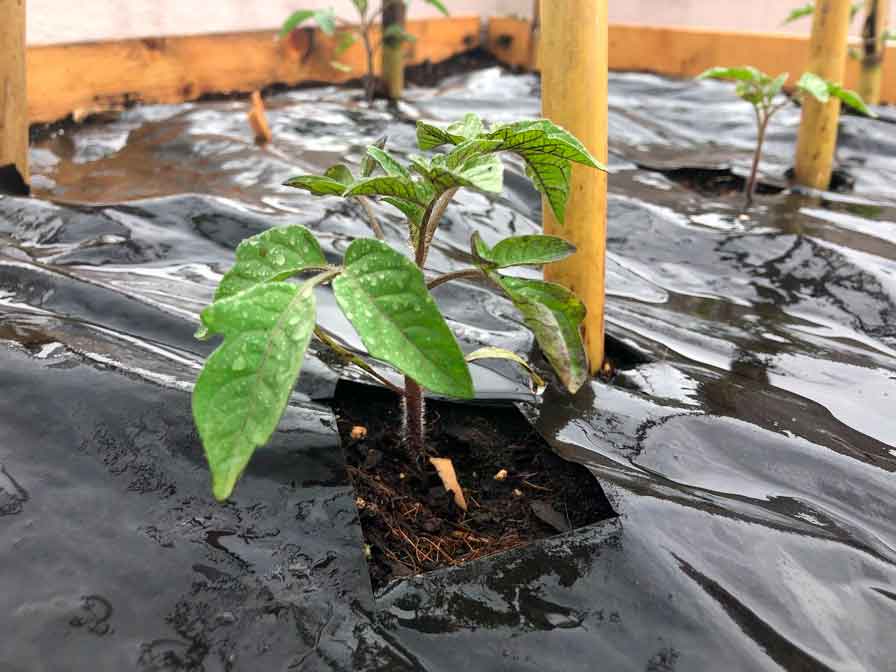
Buy Novamulch biodegradable paper mulch online here!
-
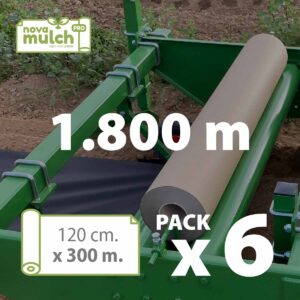 PACK of 6 rolls of Novamulch Professional paper 120 cm. x 300 m. (1.800 m)565,28 € IVA incluido
PACK of 6 rolls of Novamulch Professional paper 120 cm. x 300 m. (1.800 m)565,28 € IVA incluido -
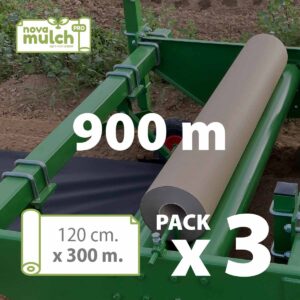 PACK of 3 rolls of Novamulch Professional paper 120 cm. x 300 m. (900 m)282,22 € IVA incluido
PACK of 3 rolls of Novamulch Professional paper 120 cm. x 300 m. (900 m)282,22 € IVA incluido -
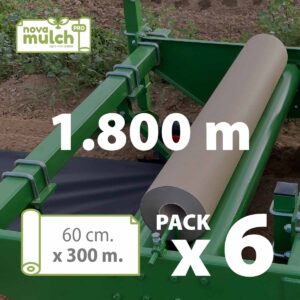 PACK of 6 rolls of Novamulch Professional paper 60 cm. x 300 m. (1.800 m)282,22 € IVA incluido
PACK of 6 rolls of Novamulch Professional paper 60 cm. x 300 m. (1.800 m)282,22 € IVA incluido -
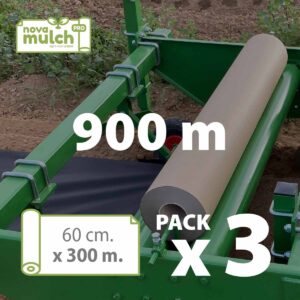 PACK of 3 rolls of Novamulch Professional paper 60 cm. x 300 m. (900 m)141,30 € IVA incluido
PACK of 3 rolls of Novamulch Professional paper 60 cm. x 300 m. (900 m)141,30 € IVA incluido -
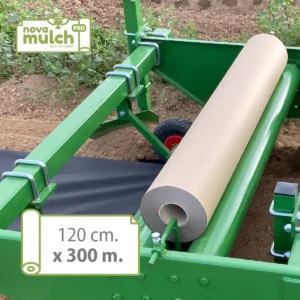 Novamulch Professional Paper 120 cm. x 300 m.94,21 € IVA incluido
Novamulch Professional Paper 120 cm. x 300 m.94,21 € IVA incluido -
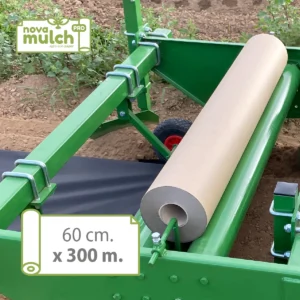 Novamulch Professional Paper 60 cm. x 300 m.47,10 € IVA incluido
Novamulch Professional Paper 60 cm. x 300 m.47,10 € IVA incluido -
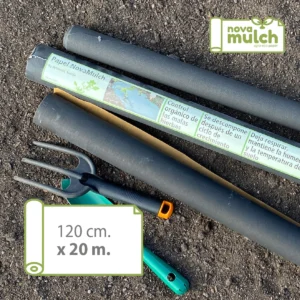 Novamulch paper 120 cm. x 20 m.41,63 € IVA incluido
Novamulch paper 120 cm. x 20 m.41,63 € IVA incluido -
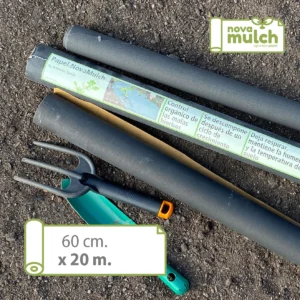 Novamulch paper 60 cm. x 20 m.21,89 € IVA incluido
Novamulch paper 60 cm. x 20 m.21,89 € IVA incluido -
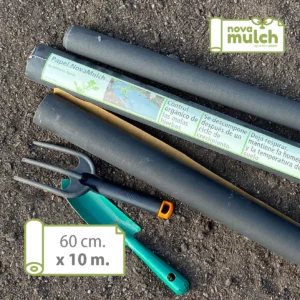 Novamulch paper 60 cm. x 10m.14,85 € IVA incluido
Novamulch paper 60 cm. x 10m.14,85 € IVA incluido -
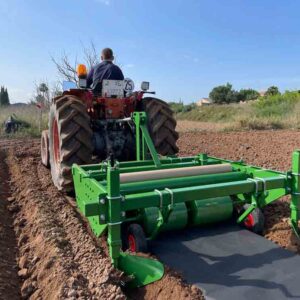 Novamulch agricultural mulching machine
Novamulch agricultural mulching machine
Organic fungicide applications to combat diseases in tomato plants.
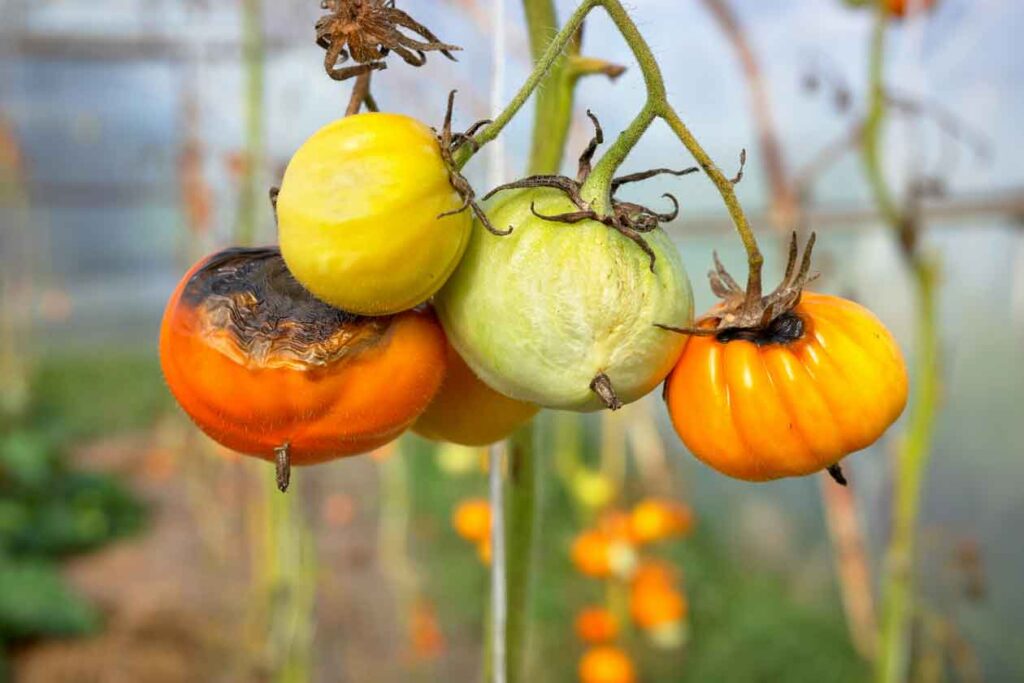
It is advisable to consider preemptive applications of organic fungicides when we suspect high-risk conditions, so we can anticipate the establishment of tomato plant diseases.
Let’s consider implementing the use of organic and ecological fungicides, adopting the dosages and technical recommendations of each manufacturer and following the permits in force in the country or autonomous community where we are located. We research local registries and authorized products for organic farming that act as preventatives or defense inducers.
We should preferably apply them when we are experiencing high levels of humidity and prolonged rainfall or heavy watering. We should apply them at dawn or dusk. It is not recommended to do so during the hours of intense sun or heat.
Let’s examine some organic fungicides, but not before investigating what we mentioned a moment ago:
Romeo® (biological inducer).
Nature and mode of action:
This is an organic fungicide that acts as an inducer of the plant’s natural defenses. We can apply it to stimulate internal mechanisms such as thickening of the plant walls, production of phytohormones, and defense proteins. All of this promotes the plant’s resistance to fungi such as mildew and powdery mildew.
Recommended use and application advantages:
It is recommended to always apply it during the preventive phase, that is, before symptoms of tomato diseases become visible. To ensure its effectiveness, it is essential to achieve even coverage of all foliage, including the undersides of leaves and the lower parts of the plant, which are usually the first to become infected.
Under conditions of high inoculum pressure (which we’ll explore below) or in climates favorable to fungal growth, such as high humidity, night dew, and mild temperatures, it’s advisable to repeat the application every 7 days, adjusting the frequency according to the intensity of the risk and the manufacturer’s recommendations. This reinforces the plant’s ongoing protection and reduces the possibility of infection.
The advantages of this product are its low toxicity and its ability to strengthen plants’ natural defenses. It is also accepted in almost all organic programs.
What is inoculum?
Next, let’s review a little about what inoculum is.
We define it as the infectious material of the pathogen, that is, the fungus, the bacteria, and the virus or nematode. These have the ability to initiate an infection process in healthy plants.
In the case of fungi that cause tomato plant diseases, the inoculum can be composed of spores (in Phytophthora infestans or Alternaria solani) and mycelia (hyphal fragments capable of reinfecting): resistant structures such as chlamydospores or sclerotia, which remain in the soil for months or years. This is why it is vital to break the pathogen cycle by taking preventive measures in the soil where we will develop our agricultural projects.
Inoculums have been classified into two types:
Primary inoculum:
This is the first infection of the season. It usually comes from crop debris, infected seeds, or contaminated soil itself, so the measures we take to eliminate these conditions are crucial.
Secondary inoculum:
This is produced within the same season from already diseased plants, spread by spores carried by wind, water, or insect vectors. This is why we select quality seeds.
Copper Fungicide (Copper: copper oxides, copper oxychloride, copper hydroxide).
The following short film briefly shows us the functions of this fungicide:
Copper fungicides such as Cuprantol Duo are approved for organic farming and are used preventively against major tomato diseases, including mildew, alternariosis, and botrytis.
They act by contact, forming a protective barrier on the leaves and preventing spore germination. Several applications are required at the end of the rainy season, following the recommended use within the legal limits for copper in organic farming.
To enhance their effectiveness and reduce inoculum pressure on the crop, it is important to combine them with sustainable practices such as biodegradable paper mulch, which limits soil splashing and helps maintain a microclimate less conducive to fungal growth.
Potassium Bicarbonate.
Let’s watch this video:
This is a fungicide approved for organic farming and is applied preventively for curative purposes to the surface layers against various tomato plant diseases.
Specifically, Potassium Bicarbonate (KHCO₃) acts on fungal spores by generating an alkaline environment unfavorable to their germination, so it can be used as a preventative tool to combat some tomato diseases such as powdery mildew or mildew.
Its action is to raise the pH of the leaf surface, hindering germination and the development of fungal spores. To maximize its effectiveness, it is recommended to apply it in integrated management programs along with sustainable cultural practices, including the biodegradable paper mulch Novamulch, which helps keep foliage dry, reduces moisture at the base of plants, and prevents soil splashing, which promotes the spread of pathogens.
This information interests us:
Its effectiveness, especially when applied weekly, reduces the development of the fungus. For example, in greenhouse tomato crops, potassium bicarbonate has been observed to help reduce the incidence of powdery mildew.
Let’s review this interesting information as well:
Plant Extracts and Essential Oils.
Citrus derivatives, such as plant extracts and essential oils, have antifungal properties and combat several tomato pathogens, inhibiting spore germination and reducing sporulation of the fungus associated with tomato diseases.
Here is some good information:
However, their action is not as robust as that of traditional fungicides, but we can use them as an ecological complement within a preventive program, especially in the initial stages.
In conditions such as moderate humidity levels and good foliage cover, their effectiveness is enhanced and they can be combined with cultural measures such as biodegradable paper mulch, Novamulch, to control both splashing and the required humidity levels, creating a microclimate unsuitable for the appearance and development of fungi.
Final reflections and conclusions.
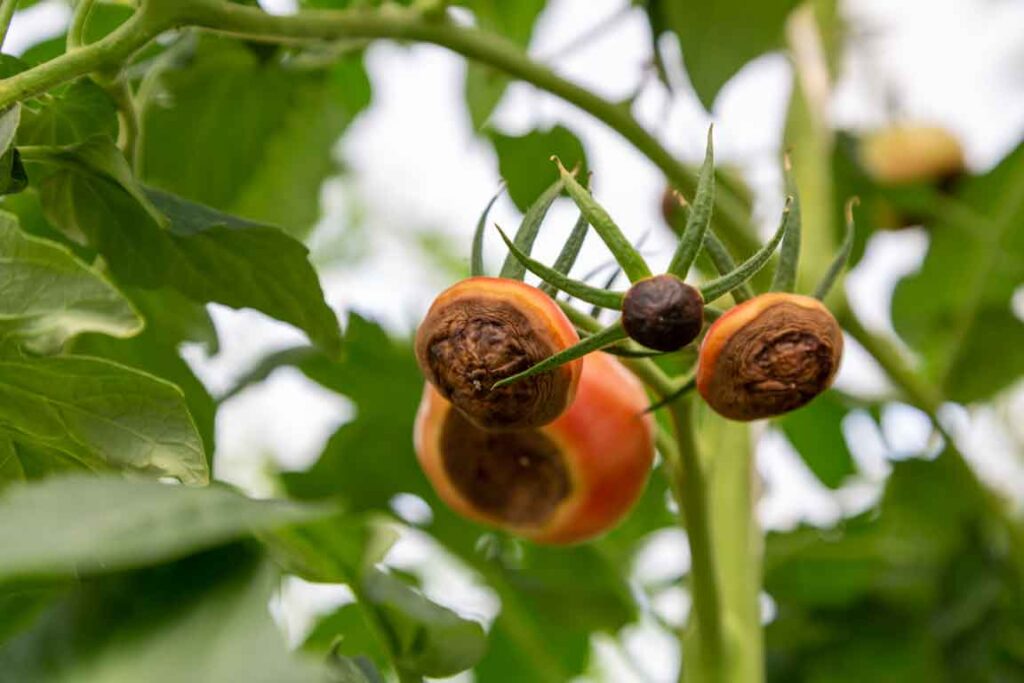
Tomato plant diseases continue to be one of the main challenges for farmers and horticulturists, not only because of their impact on fruit production and quality, but also because of the ease with which fungi, bacteria, and viruses take advantage of favorable environmental conditions to spread.
The key is not only to apply treatments when the problem is already visible, but to work preventively through a combination of selecting quality seeds according to our agricultural roadmap, proper crop management, and the use of organic fungicides that work in a committed way to the health of the crop, the soil, and our ecosystem.
Within this sustainable approach, Novamulch biodegradable paper mulch is positioned as a fundamental tool. Its ability to reduce soil splashing, maintain a balanced microclimate, and limit excessive moisture makes it a decisive ally in combating pathogens.
By integrating this effective resource with other integrated management measures, farmers can reduce the risk of infection and move toward more environmentally friendly, efficient, and profitable production.
Thus, prevention, innovation, and the use of sustainable solutions like Novamulch biodegradable paper mulch are the surest way to control tomato diseases, ensure abundant harvests, and guarantee the future viability of this essential crop.
In our second part, we’ll look in detail at the types of diseases that plague our tomato plants. We’ll analyze the observations prior to the appearance of visible symptoms, as well as the symptoms and damage caused by each species of fungus.
So, we’ll see you in our second part and let’s keep learning!

